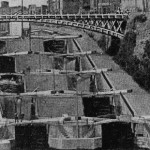
Facebook Twitter Pinterest Flickr Google+ YouTube Instagram
Written on: March 2nd, 2010 by: in Blog Posts

We’ve posted before when public figures have praised the importance of libraries to their own lifelong learning and accomplishments, and when they have emphasized the importance of public libraries to culture and society. (see here and here, for instance). This recent article on the Smithsonian Magazine website is the latest in what we hope will be a never-ending series.
This recent article appealed to me on two fronts. Joyce Carol Oates is a literary author who is incredibly well-regarded by critics and the reading public alike, and in a previous job, I spent several years working on the papers one of the world’s most famous capitalists that no-one has ever heard of- John J. Raskob, who was born in Lockport and wrote nostalgically about the town through his long and fascinating career- I was so steeped in his letters and the minutiae of his life that I felt like I knew the streets of the town even though I had never walked them. Good writers can do that.
The full article is lengthy but well worth taking the time to read, and as good as summary of the cultural and societal importance of public libraries as anything else that I’ve seen. Here’s an extract:
The Lockport Public Library has been an illumination in my life. In that dimension of the soul in which time is collapsed and the past is contemporaneous with the present, it still is. Growing up in a not-very-prosperous rural community lacking a common cultural or aesthetic tradition, in the aftermath of the Great Depression in which people like my family and relatives worked, worked and worked—and had little time for reading more than newspapers—I was mesmerized by books and by what might be called “the life of the mind”: the life that was not manual labor, or housework, but seemed in its specialness to transcend these activities.
Read the whole article at the Smithsonian Magazine website.